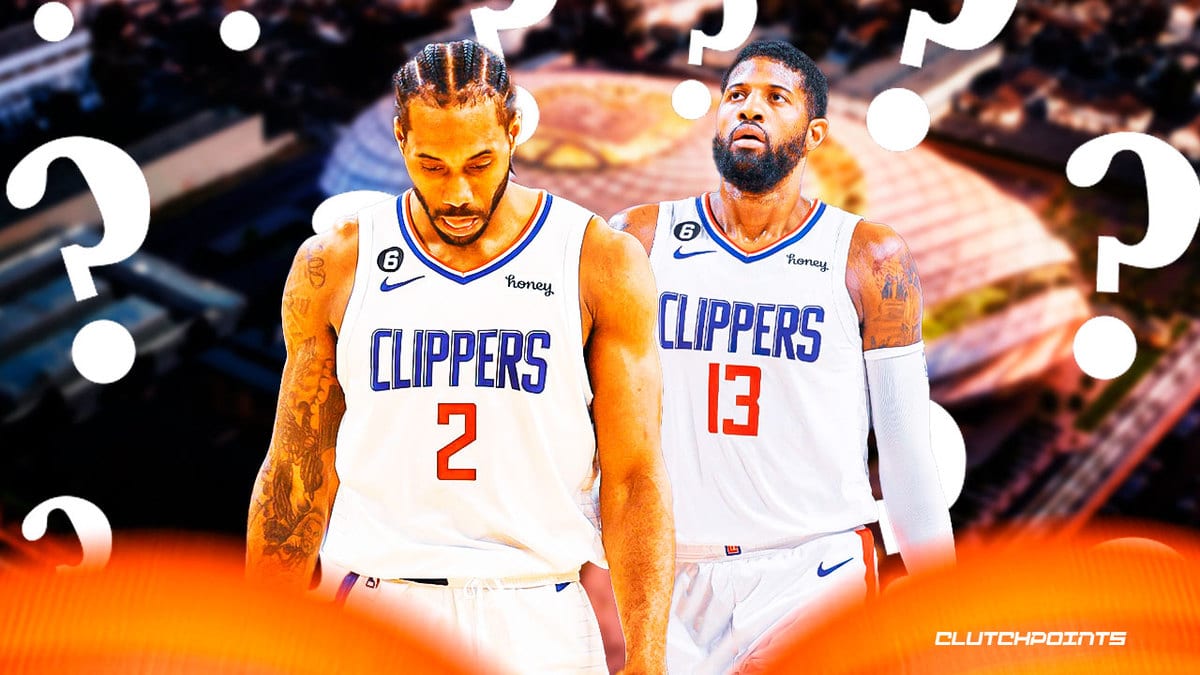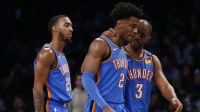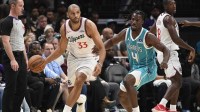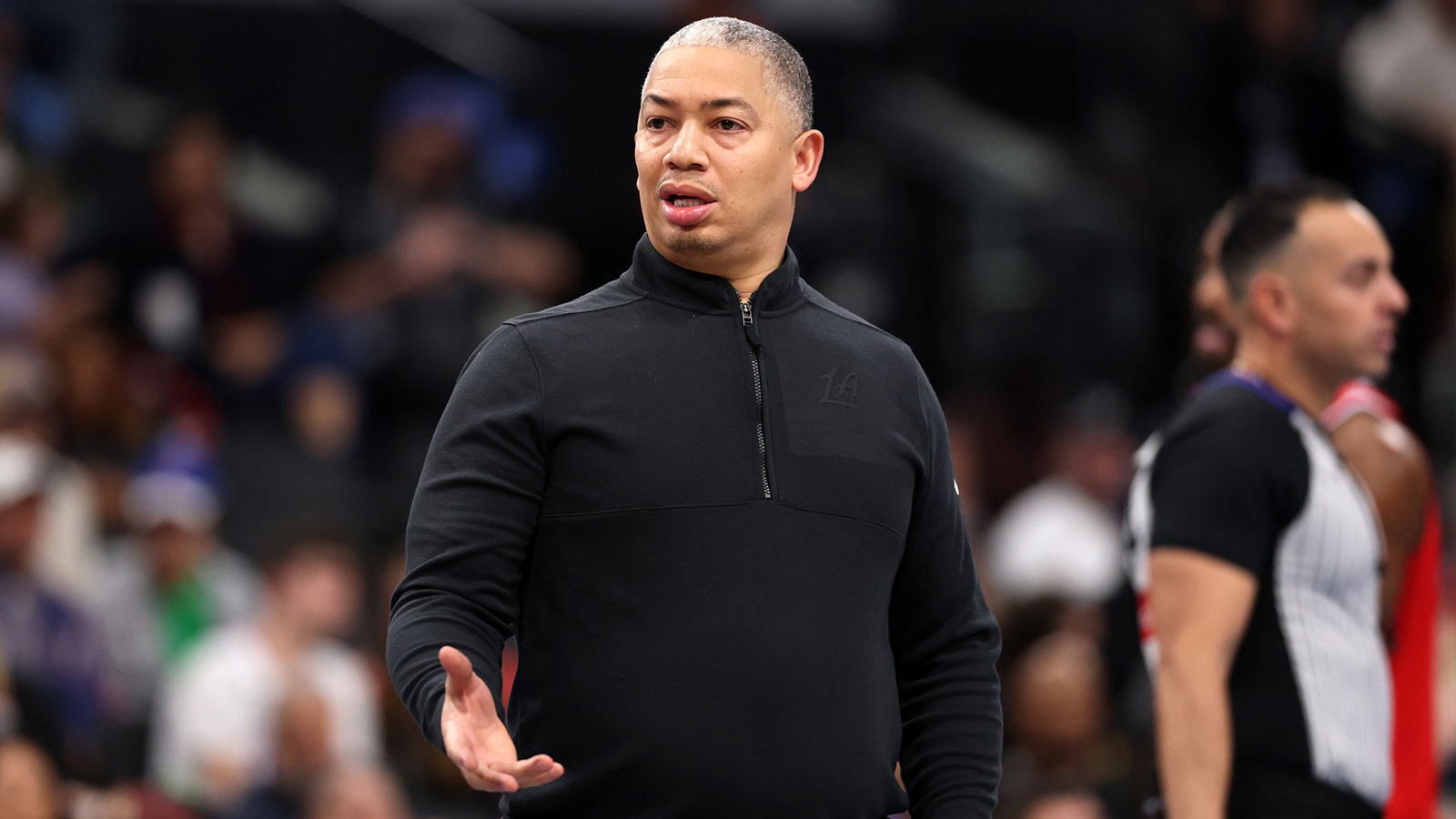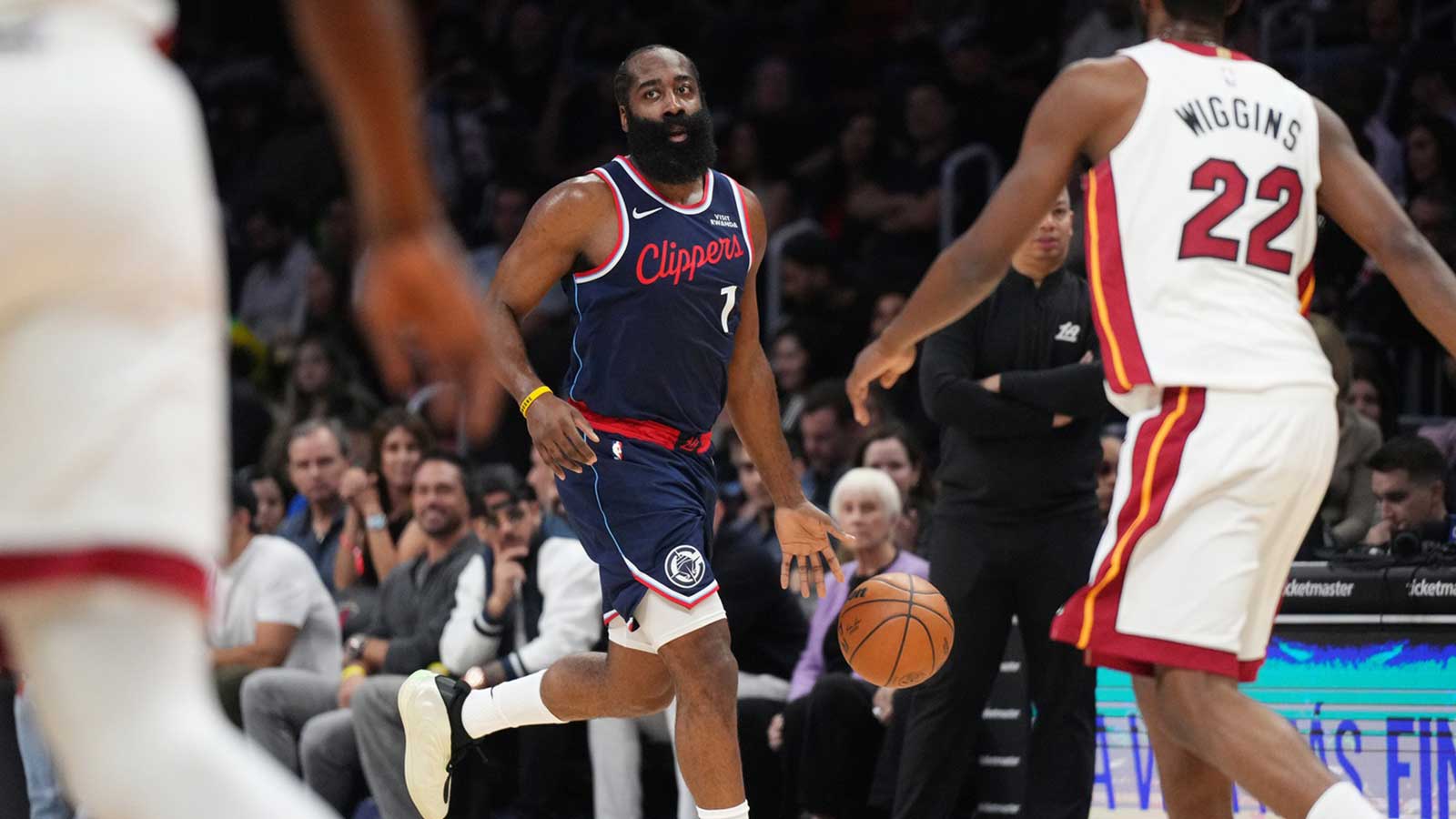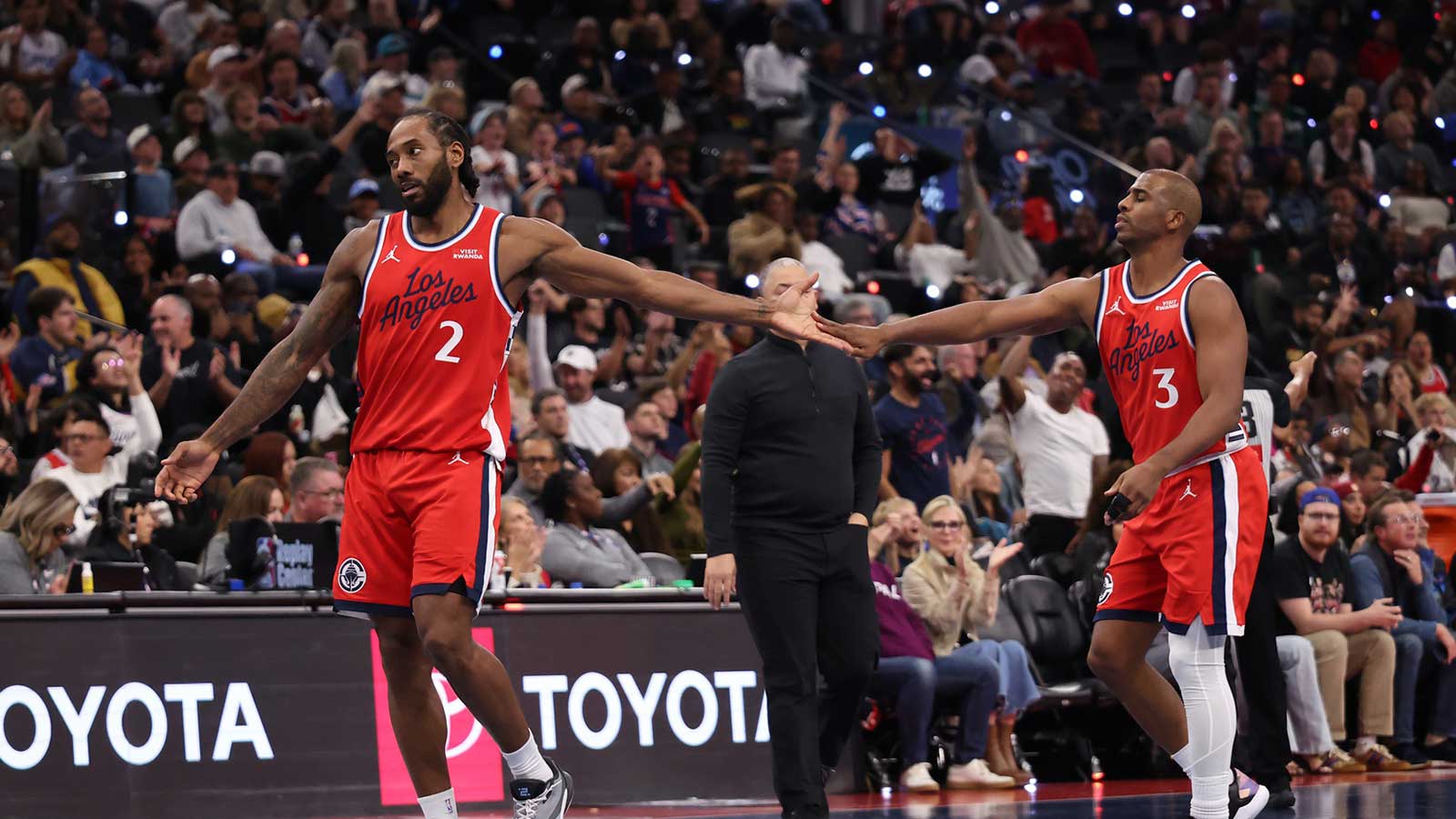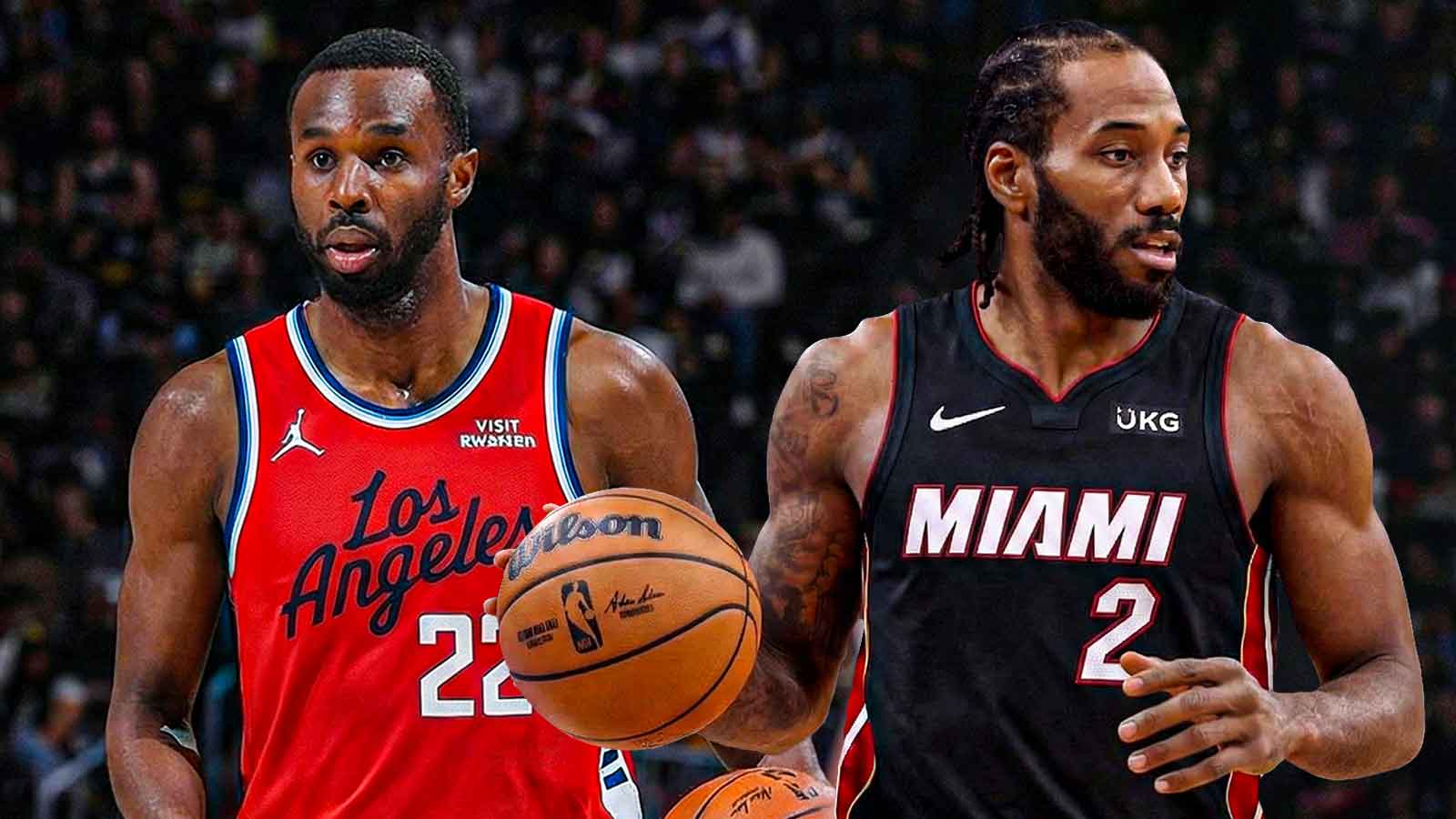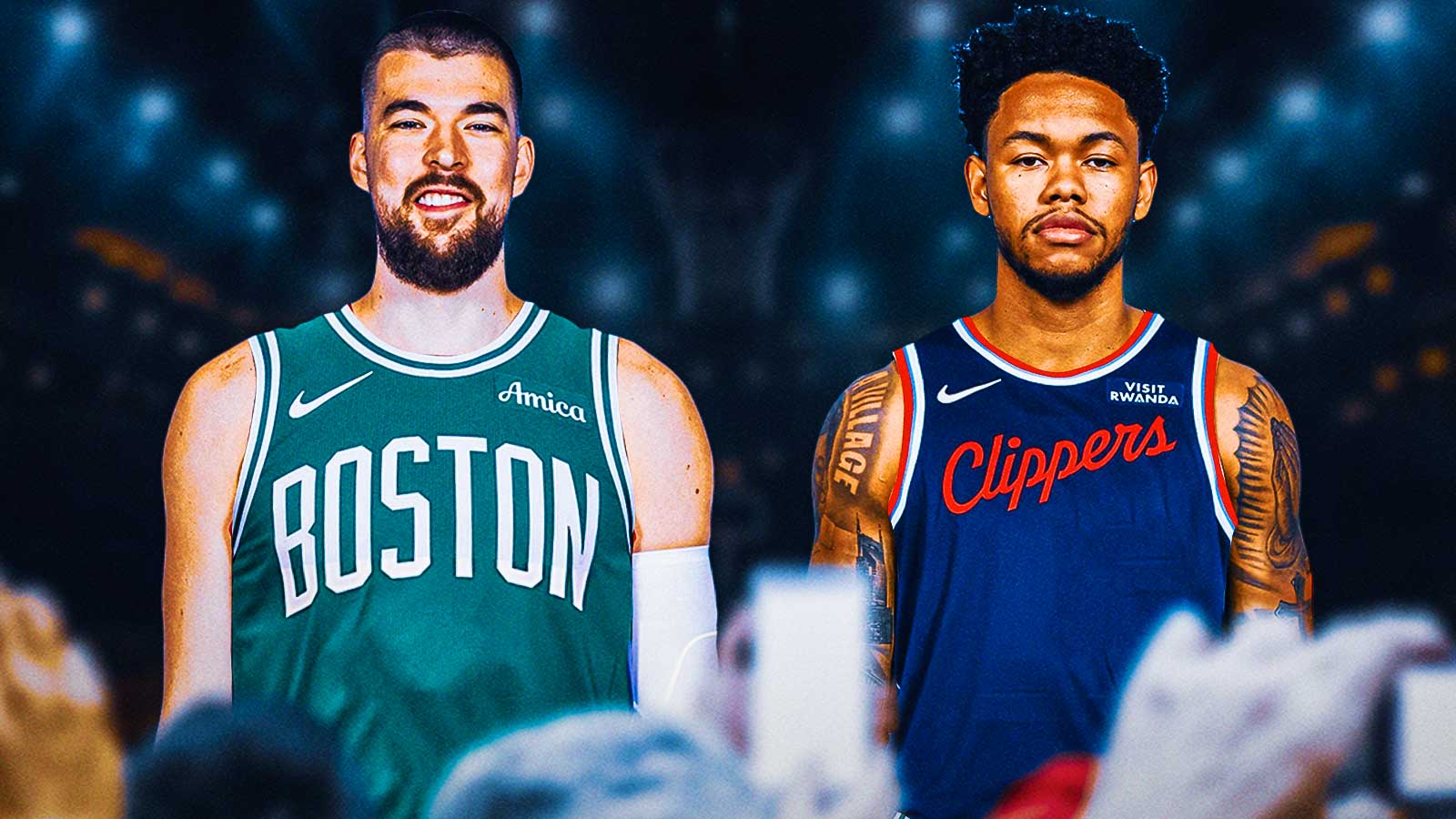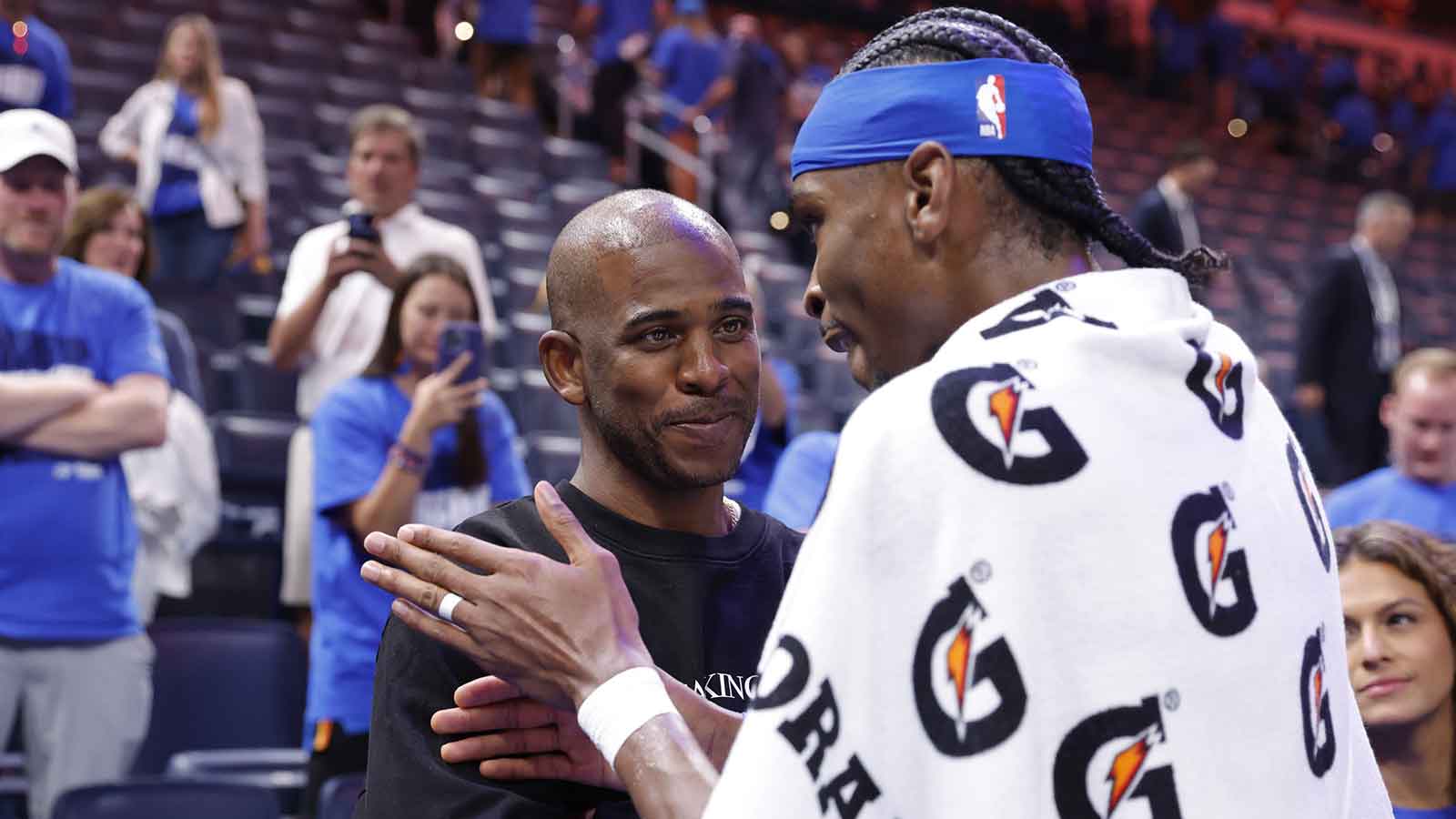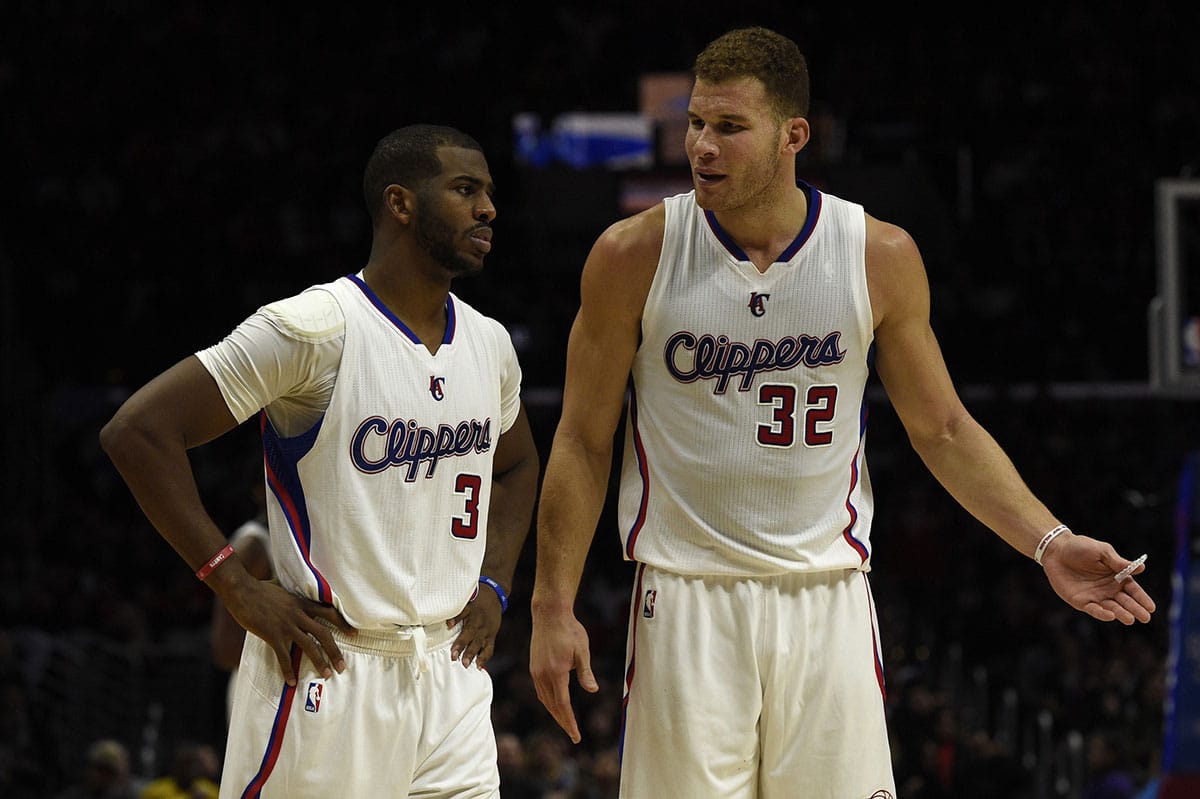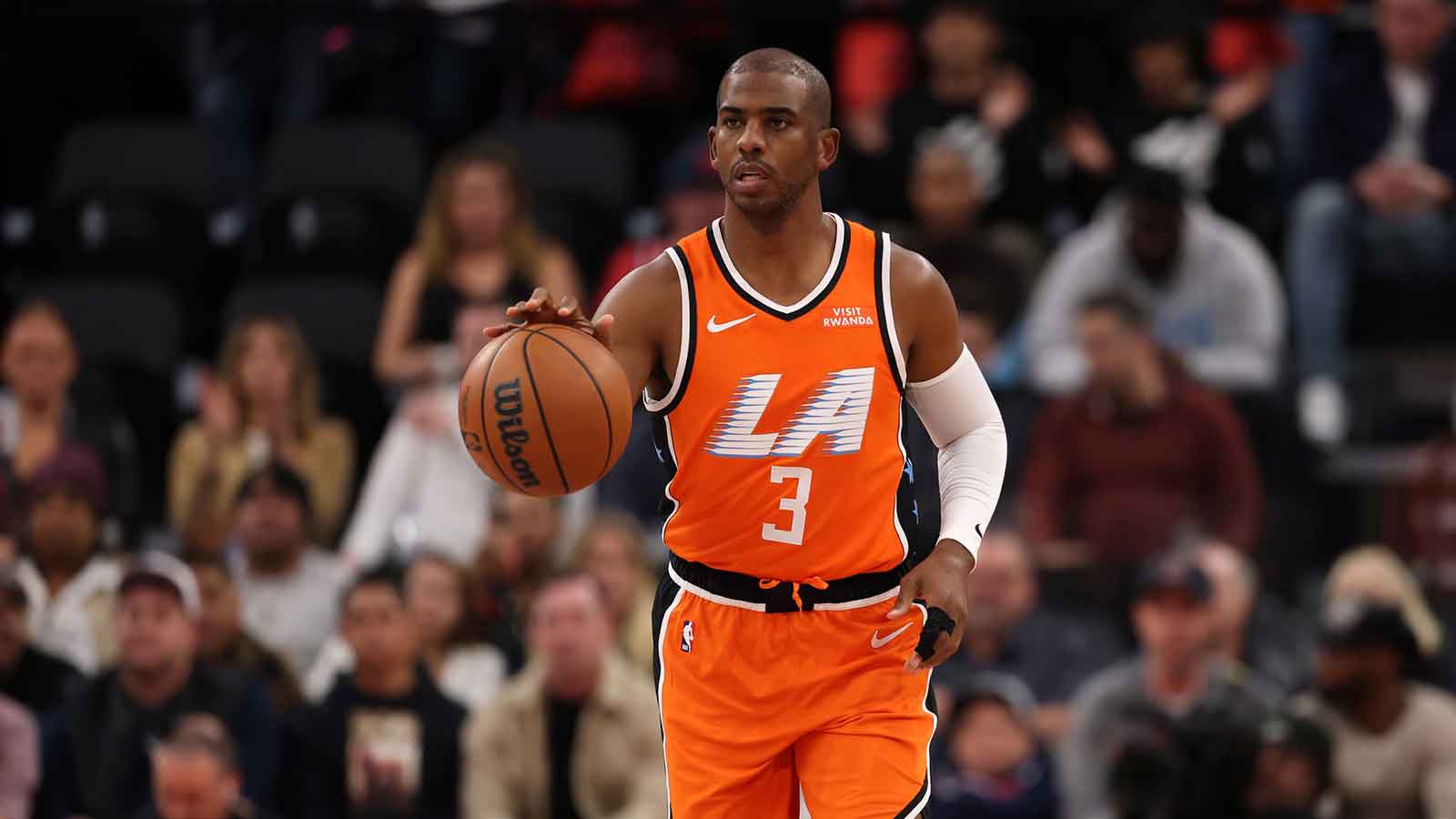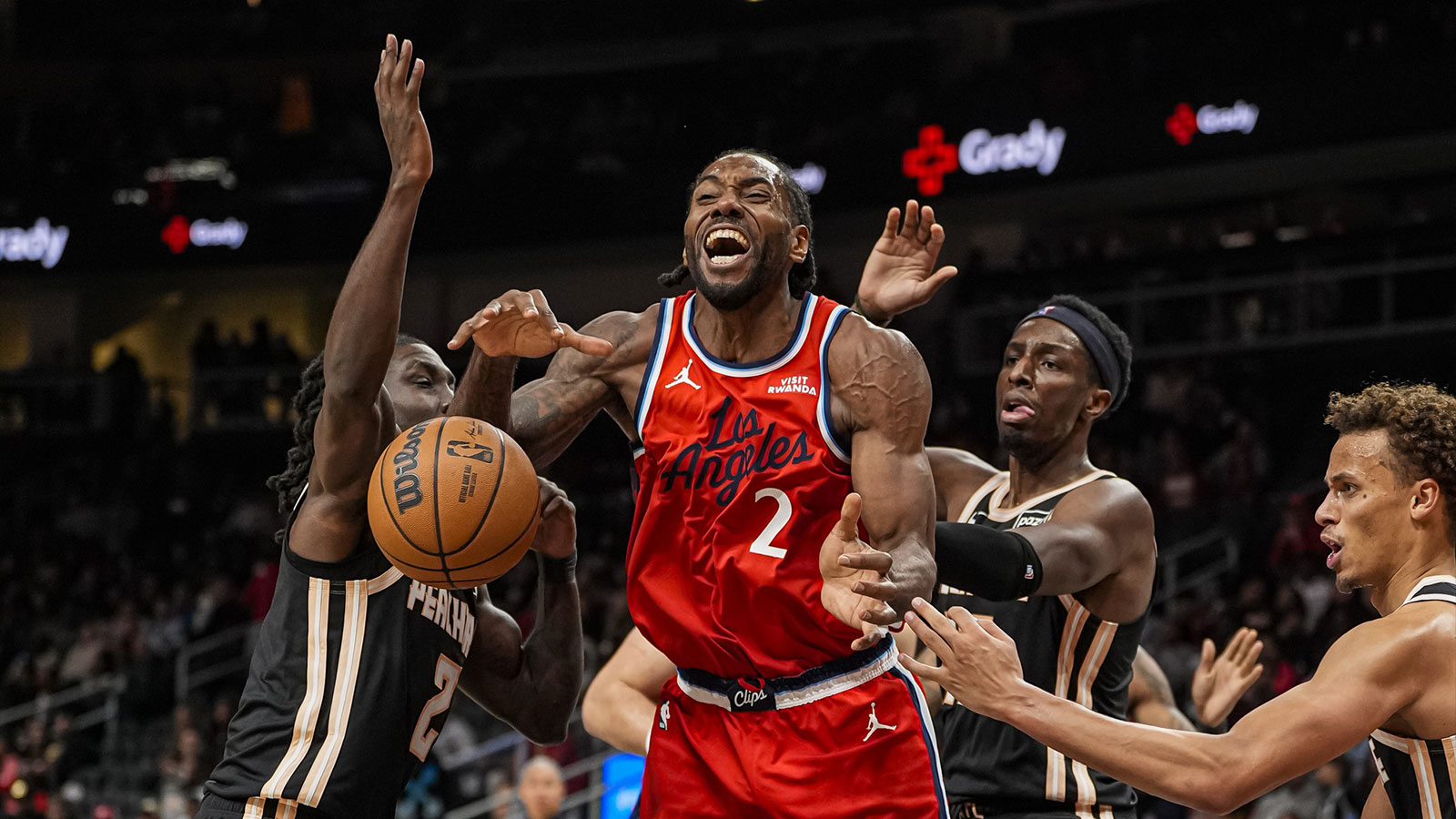They are not.
That's right. They are not affected by it. The amount of notable social media accounts using photos of LA Clippers stars Kawhi Leonard and Paul George as the poster children for the load management debates and news about the NBA's new Player Participation Policy is staggering and hilarious. If anything because it's not true, and anyone who pays attention beyond simply Googling, ‘how many games did _____ play last year?' would be able to tell you that.
Additionally, this new policy hardly even applies to the Clippers, according to the memo the league sent all 30 teams which was obtained by ESPN.
∙ Teams must manage their roster to ensure that no more than one star player is unavailable for the same game.
∙ Teams must ensure that star players are available for national television and in-season tournament games.
∙ Teams must maintain a balance between the number of one-game absences for a star player in home games and road games — with a preference for those absences to happen in home games.
∙ Teams must refrain from any long-term shutdown — or near shutdown — when a star player stops participating in games or plays in a materially reduced role in circumstances affecting the integrity of the game.
∙ Teams must ensure that healthy players resting for a game are present and visible to fans.
There are also exceptions to the rule, according to ESPN's Bobby Marks.
The NBA will allow pre-approved designated back-to-back allowances for players who are 35 years old on opening night or have career workloads of 34,000 regular-season minutes or 1,000 regular-season and playoff games combined, sources said.
If a team feels that a star player is unable to play in back-to-back games, it must provide to the NBA written information at least one week prior explaining why the player's participation should be limited.
The league has also said that a team can seek approval for a star player to be unavailable for one end of a back-to-back based on the player's prior or unusual injury history.
The league has also listed several other exceptions that will be granted, including:
∙ Multigame absences for bona fide injury
∙ Personal reasons
∙ Rare and unusual circumstances
∙ Roster management of unavailable star players
∙ End-of-season flexibility
If we're being honest, this applies moreso to teams like the Dallas Mavericks resting Kyrie Irving and Luka Doncic late at the end of last season to miss the play-in tournament and ensure they retain their draft pick. This also applies to the Portland Trail Blazers resting Damian Lillard or Washington Wizards resting Bradley Beal down the stretch of last season.
At the end of the 2020-21 season, the Clippers rested their key guys for the final two games of the regular season against the Houston Rockets and OKC Thunder. The new Player Participation Policy would apply for those given they were healthy scratches.
There's an assumption that Leonard and George sit out games because they feel like it or are, ‘load managed,' whatever that means in this day and age. I say whatever it means because the term, which started as a way to preserve players through the grueling 82-game grind, has become more loosely thrown around any time a player misses significant time in a season. There's no denying that Kawhi Leonard and Paul George have missed a lot of games since joining the Clippers in 2019. Like, an abundant amount.
Kawhi Leonard has only played in 187 total games played out of a possible 347 including the playoffs. Paul George isn't that much better, playing in a total of 222 games out of a possible 347, including the playoffs.
But there's also some level of context that simply has to be applied to the significant absences they've had to deal with. For example, here are the reasons behind the 30 games that Kawhi Leonard missed this past season in his first year back from an ACL tear.
∙ 12 games after the 3rd game of the season when his surgically repaired knee became inflamed and stiff
∙ Nine halves of back-to-back sets, eight of which came after returning from ankle sprain (and he played in both of the last two back-to-back of the season)
∙ Six games to an ankle sprained when landing on Amir Coffey's foot
∙ One game to injury management on February 10th vs. Bucks
∙ One game to a non-COVID illness on January 2nd vs. the Heat
∙ One game to personal reasons on March 29th vs. the Grizzlies
So how many games did Kawhi Leonard miss due to ‘load management?'
Now let's do Paul George, who played 56 games and missed 26.
∙ Nine games missed due to knee sprain suffered on March 21st vs. Thunder; would miss remainder of season plus five playoff games (and truthfully, George is lucky it wasn't worse)
∙ Seven games missed due to right hamstring tendon strain
∙ Five games due to right hamstring soreness (same leg as the tendon strain)
∙ Three halves of back-to-back sets
∙ One game due to a non-COVID illness on October 25th vs. the Thunder
∙ One game due to knee soreness on December 17th vs. the Wizards
How many games did Paul George miss due to ‘load management?'
Leonard, George, and the Clippers have been incredibly unlucky since the duo arrived in Los Angeles together. Adding insult to injury is the fact that George was actually very reliable from an availability standpoint prior to his arrival in LA.
Since his return from a broken leg with the Indiana Pacers in 2015 until the end of his tenure with the Oklahoma City Thunder in 2019, Paul George played 312 out of a possible 328 games. That's a whopping 95.1 percent of games! George was traded to the Clippers after undergoing offseason surgeries on both shoulders. He was already set to miss time if he started that season with the Thunder.
Aside from that, looking at George's injury history with the Clippers, there are a number of hamstring injuries and re-aggravations in the 2019-20 as well as 2022-23 seasons, a bone edema injury that he actually played through for months in the 2020-21 season (it's mostly a pain tolerance injury that you have to manage), a sprained UCL in his right elbow that made it impossible to bend his arm in the 2021-22 season (kind of necessary in basketball), and a sprained knee that looked like it was lucky not to snap backwards (literally).
And then you have Kawhi Leonard, who has had to deal with countless lower body ailments over the last couple of years. From his right quadriceps tendinopthy with the San Antonio Spurs to the left knee patellar tendinopathy with the Raptors, management of his workload is key to Leonard's long-term health and availability. It's unfortunate that a fluke step with Joe Ingles defending in transition resulted in a torn ACL. That was followed up by a torn meniscus suffered during the Suns series this past postseason.
There were multiple points this season where both Paul George and especially Kawhi Leonard were frustrated with the training staff for not clearing them to go out and play. On one occasion, another player who was dealing with an absence that was beyond a ‘day-to-day' type of injury said he felt great, but was not cleared to play by the training staff yet.
The players want to play, and the training staffs are doing their best to make sure players are as close to 100 percent as possible before clearing them to return. That's what load management was always about before it turned into whatever it is today.
Maybe this new Player Participation Policy works, and maybe it doesn't. At the very least, the NBA is telling the world it wants its players to play in the highly anticipated matchups while, in another light, potentially telling them they don't really care about the small market teams or non-nationally televised games.

